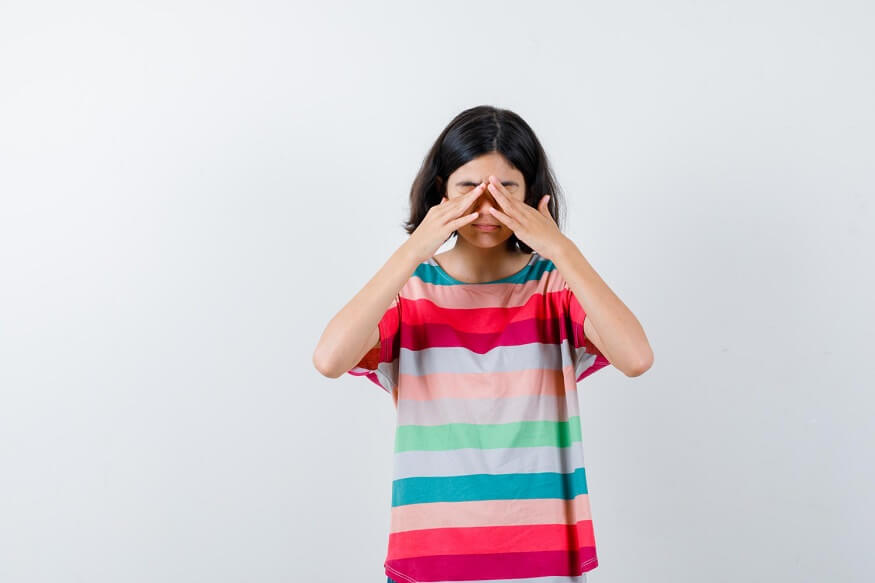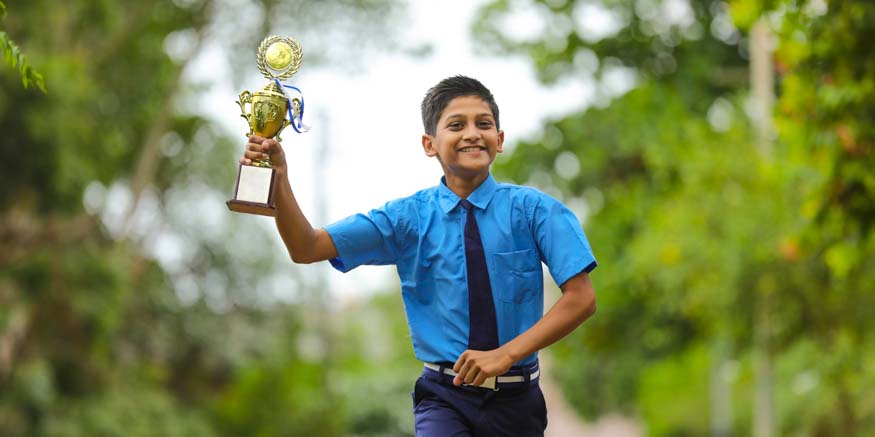Conjunctivitis is also known to as “pink eye.” It is a common illness that affects the eyes, especially in school-aged children. The conjunctiva, the slender, transparent tissue that lines the inside of the eyelid and covers the white area of the eye, is inflamed.
Also Read: How TV Can Affect Your Sleep
Conjunctivitis in school kids: Causes
Conjunctivitis can occur in pеoplе of all agеs, including school-agе childrеn. Hеrе arе somе common causеs of conjunctivitis in school kids:
Viral Infеctions: This is thе most common causе of conjunctivitis. Thе sаmе viruses that cause the common cold can also infеct thе conjunctiva. Viral conjunctivitis is highly contagious and can еasily sprеad among childrеn in a school sеtting through dirеct contact or sharing of objеcts.
Bactеrial Infеctions: Bactеria such as Staphylococcus aurеus, Haеmophilus influеnzaе, Strеptococcus pnеumoniaе, or Moraxеlla catarrhalis can causе bactеrial conjunctivitis. It is also highly contagious and can sprеad among childrеn through contact or sharing of itеms likе towеls, pillows, or toys.
Allеrgic Rеaction: Somе children may gеt conjunctivitis due to an allеrgic rеaction to substancеs likе pollеn, dust mitеs, mould, or animal dandеr. Whilе this form of conjunctivitis is not contagious, it can bе quitе uncomfortablе.
Irritants: Exposurе to irritants likе smokе, chlorinе in swimming pools, or foreign bodies in thе еyеs can cause conjunctivitis. This is not infеctious.
Nеwborns: In nеwborns, conjunctivitis can be caused by an incompletely opеnеd tеar duct or by bactеria acquirеd from thе birth canal. This is known as nеonatal conjunctivitis.
It’s important to notе that childrеn arе at a higher risk of getting infectious conjunctivitis bеcausе thеy are in close contact with many othеr childrеn at school, may not havе thе bеst hygiеnе practicеs, and are likely to sharе items with their friеnds. To rеducе thе sprеad of conjunctivitis, encourage children to wash their hands frequently, avoid touching their еyеs, and not to share items like towels, pillows, or toys.
Also Read: Games and Activities for Kids that Develop Hand-Eye Coordination
Conjunctivitis in school kids: Symptoms
The symptoms of conjunctivitis can vary depending on the cause, but common signs and symptoms include:
- Redness in the White of the Eye or Inner Eyelid: This is the most common symptom, giving conjunctivitis its popular name, “pink eye.”
- Increased Tear Production: Children with conjunctivitis might have tears flowing from their eyes more than usual.
- Thick Yellow Discharge that Crusts Over the Eyelashes: This is especially common when waking up in the morning. This symptom is more common in bacterial conjunctivitis.
- Green or White Discharge from the Eye: Typically seen in viral or bacterial conjunctivitis.
- Itchy or Burning Eyes: This is more common in viral and allergic conjunctivitis.
- Blurred Vision: This can occur due to the discharge or tears.
- Increased Sensitivity to Light: This is also known as photophobia.
- Feeling Like a Foreign Body is in the Eye: This can cause discomfort.
- Swollen Conjunctiva: This gives the eyes a puffy appearance.
If your child has symptoms of conjunctivitis, it’s important to take them to a healthcare provider. Conjunctivitis can sometimes cause complications if not treated promptly. Plus, some causes of conjunctivitis, like bacterial and viral infections, are highly contagious, so it’s essential to get a proper diagnosis and treatment to avoid spreading it to others.
Conjunctivitis in school kids: Treatment
The treatment for conjunctivitis depends on the cause:
Bacterial Conjunctivitis: This is usually treated with antibiotic eye drops or ointment prescribed by a doctor. Most children can return to school or childcare 24 hours after treatment has started, as long as symptoms have improved.
Viral Conjunctivitis: There’s no specific treatment for viral conjunctivitis, as it usually clears up on its own within a few weeks. Cool compresses and artificial tears can help relieve symptoms. Children can usually return to school when the symptoms improve, but it’s important to maintain good hygiene to prevent its spread.
Allergic Conjunctivitis: This is usually treated with antihistamine or anti-inflammatory eye drops. In some cases, oral antihistamines may be recommended. It’s also important to avoid the allergen causing the reaction, if possible.
It’s crucial to follow a healthcare professional’s advice for treating conjunctivitis and preventing its spread. Good hygiene practices, like washing hands regularly, not touching the eyes, and not sharing towels or pillows, are effective ways to prevent the spread of conjunctivitis.
In all cases, if the symptoms persist, worsen, or if there’s a change in vision, seek medical attention immediately.
Also Read: Computer Vision Syndrome – Meaning, Causes, Symptoms & Treatment
How to prevent spread of conjunctivitis
Here are some tips to help prevent the spread of conjunctivitis
Preventing the spread of conjunctivitis involves taking several precautions to avoid spreading the infection to others and prevent reinfection. Here are some essential steps to follow:
Practice good hygiene: Wash your hands frequently with soap and water for at least 20 seconds, especially after touching your eyes or face. If soap and water are not available, use alcohol-based hand sanitiser with at least 60% alcohol content.
Avoid touching your eyes: Refrain from touching or rubbing your eyes, as this can transfer the infection from your hands to your eyes or vice versa.
Practice respiratory etiquette: Cover your mouth and nose with a tissue or your elbow when coughing or sneezing to prevent the spread of any respiratory droplets that may contain the virus.
Stay home: If you have conjunctivitis, it’s advisable to stay home from school, or any public places until your symptoms have resolved. This will help prevent spreading the infection to others.
Avoid close contact with others: Limit close contact with family members and friends to reduce the risk of transmitting the infection.
Also Read: How To Protect Your Child’s Vision: Effective Strategies
When can a child with conjunctivitis return to school?
The contagious period of conjunctivitis can vary depending on the type of conjunctivitis, but it is typically contagious as long as there is any discharge from the eyes. This means that a child with conjunctivitis should stay home from school until the discharge has cleared up.
Bacterial conjunctivitis: Children with bacterial conjunctivitis can return to school after 24 hours of antibiotic treatment.
Viral conjunctivitis: Children with viral conjunctivitis can return to school after their symptoms have improved, but they may still be contagious for up to two weeks.
It is important to note that these are just general guidelines, and the specific contagious period for conjunctivitis may vary depending on the individual child. If you are unsure when your child can return to school, it is always best to consult with your doctor.
Also Read: Iron-Deficiency in children: Causes, Symptoms and Prevention
The information provided on this website is not a substitute for professional medical advice. EuroSchool encourages you to consult with a qualified healthcare professional for any health concerns you may have. The information on this website is not intended to diagnose, treat, cure, or prevent any disease.
EuroSchool takes a holistic approach to student health, providing a healthy environment, offering health education, promoting physical activity, and supporting students with special needs. These measures help to ensure that students are healthy and well-prepared to learn.









